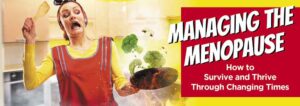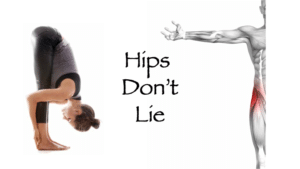In this article, items in blue are hyperlinks to Patient Resource leaflets produced by qualified physiotherapists, designed to help you manage your back pain better.
One of the most common reasons people come for a massage is because of the grinding pain they feel in their lower back.
Low back pain covers a broad range of problems affecting joints and soft tissues such as muscles, ligaments, tendons, discs and nerves. Common symptoms include pain, stiffness and limited range of motion. The cause of your back pain may be hard to determine:y sometimes it is age-related or due to your occupation, activity level and lifestyle. Other causes involve wear and tear (overuse), trauma, degeneration or even genetic disorders. Once Red Flags are ruled out, treatment may be finding ways to help you manage the pain.
Pain is the most common symptom of back pain sufferers, and can be difficult to treat. Acute pain can manifest into a chronic problem caused by delayed healing, inadequate treatment or complications derived from the original injury. Pain doesn’t have to be the only symptom; there can also be nerve symptoms such as burning, tingling or numbness. Other symptoms that can develop with your back issues include depression, anxiety and stress. This can be due to the problem impacting on your work, family or social life. Pain itself can be depressing and cause anxiety, not to mention its impact on sleep deprivation which in turn causes further stress and depression.
There is lots you can do to manage back pain: looking after yourself: starting the day well, keeping active and flexible, preparing for sleep and sleeping well, including how you sleep in bed. Professionals are there just to help you on your way.
Massage therapy is an effective tool in the treatment and management of back pain. Massage can produce a number of benefits which can enable you to improve your performance and functioning such as a decrease in pain, improvement in range of motion and tissue flexibility. It not only addresses the problem of pain directly by reducing it but also induces relaxation which will relieve stress and anxiety associated with the problem.
Massage can improve your overall health and mental energy, giving you a more positive outlook.
BENEFITS OF MASSAGE
1. Massage for Pain Reduction
Massage increases muscle flexibility and reduces tension which could be creating pain. A massage will also increase serotonin production (happy hormones) thereby reducing stress levels and decreasing pain. Massage triggers the release of natural pain killers, such as dopamine. The physical touch and pressure of massage also interfere with pain signal transmission and reduces its ability to reach the brain.
Massage promotes healing by increasing blood flow to the area, bringing with it oxygen and nutrients. Muscle spasm, pain and swelling can be reduced through massage improving the symptoms you may be experiencing that are adding to your stress. Stress is associated with pain, for example anxiety about an illness or injury, or concern about how it may be impacting you personally, professionally and financially. Cortisol, a stress hormone is released in response to pain, further increasing your stressful experience of pain. The more the pain increases, the more the stress increases, which will in turn keep increasing the pain levels.
2. Massage for Relaxation
Relaxation can be increased when stress is reduced. When stress levels are high both physically and mentally, relaxation is prevented. Muscles become tense and painful, and headaches or pain compound your stress and frustration. A massage aims to relieve muscle tension, and does so in the following way.
- Friction is created between the skin and fingers during a massage, encouraging blood flow to increase.
- Increasing blood flow causes the muscle temperature to rise.
- Tissue elasticity increases releasing tension in the muscles.
- Relaxation of muscles allows an increase in movement and a decrease in pain.
Massage is also proven to reduce blood pressure and heart rate which will allow your body to de-stress and reduce the symptoms you may be feeling of stress and anxiety.
Cortisol is a stress-related hormone released when the brain detects a threat. Prolonged periods of high cortisol levels (often the case when dealing with chronic pain) can lead the individual to feel anxious, stressed and depressed. Massage can promote relaxation, by increasing the release of endorphins and serotonin (happy hormones) and enable you to feel calm, therefore reducing the release of cortisol. Low levels of cortisol can enable the individual to feel alert, observant and aware.
3. Massage for Improved Flexibility and Movement
The friction and manipulation of muscles and soft tissues during massage stimulate blood flow to the area. The increase in circulation and warmth increases tissue flexibility and can release tight structures and improve movement. The application of massage can help to reduce muscle tension, fascia tension and scar tissue all of which can assist in improved muscle flexibility andinjury prevention. The manual stretching and elongation of muscles during a massage can improve joint movement.
4. Massage for Trigger Point Release
A trigger point is a tight ‘knot’ within the muscle where congestion has created a hypersensitive area that can refer pain to neighbouring areas and create headaches. A therapist can use their fingers
or thumbs with firm pressure creating an ischemic reaction. Pain may be felt during this time but eases over a few seconds. When the pressure is released blood rushes to the area, causing muscle relaxation.
5. Massage for Scar Tissue Reduction
Massage therapy can be extremely beneficial following a surgical procedure. When surgery has been performed an accumulation of scar tissue will be formed in the surrounding areas due to the distress to the tissues. The formation of scar tissue is unavoidable as it is part of the healing process; if left untreated though, scar tissue can become excessive and adhesive,limiting the performance and flexibility
of muscles or joints. A range of massage techniques which vary in stroke depth, direction and rhythm can achieve a number of benefits. The benefits of massage post- surgery include a reduction in swelling, increased healing and reduced scar tissue.
6. Massage for Promotion of Healing
Massage can produce an increase in cellular exchange by increasing the blood flow to the affected area. Cellular exchange refers to the process of delivering essential nutrients such as oxygen and removing waste products from tissues.
An increase in cellular exchange can help facilitate healing, maximise performance and maintain healthy muscles.
7. Massage for Breakdown or Realignment of Collagen Fibres
When an injury occurs the body lays down collagen fibres in a disorganised fashion. Disorganised collagen fibres can lead the tissue to become painful and tight, and a reduction in the range of movement may be observed. Massage can break down the adhesive fibre connections and realign collagen fibres into a more functional orientation.
8. Massage for Stress Relief
Stress may present itself in different ways. Some people have a racing heart beat, elevated breathing rate, develop shakes, struggle to focus, and feel overwhelmed, angry and anxious. Others, however, may feel exhausted, depressed, lethargic, and tearful. Stress can also have many origins, often not just one. Work, school, relationships, family conflict, social struggles, and economic worries are all great generators of stress. People can also be stressed about their health, concerns with a chronic illness or diagnosis, pain or an injury that may be preventing them from participating in things they really enjoy. As mentioned above regarding relaxation, massage increases endorphin, serotonin and dopamine release (all the happy stress- relieving hormones) while at the same time reducing cortisol (the stress hormone).
9. Massage for Better Sleep
Massage boosts the release of melatonin through increasing serotonin (another happy good hormone). Melatonin is a natural drug that regulates your body’s circadian rhythm telling it when it’s time to sleep. Melatonin winds the body down to a more lethargic and sleep-ready state. As massage induces relaxation, reduces anxiety and stress, reduces pain and tension, and indirectly increases melatonin in your body you will surely be in a better place to have some refreshing sleep. The better you sleep the better you will feel. Sleep is medicine for the body to heal and reduce pain, anxiety and stress thus allowing you to cope better through the day and be more active.
In short
Massage can be of benefit to you if you are suffering from back pain. Situations where massage would be extremely beneficial include chronic pain, muscle spasm, as part of a rehabilitation programme, post- surgery, and relieving stress and anxiety often associated with back pain. The benefits of massage include a decrease in pain, increased range of motion, relaxation, improved flexibility and promotion of healing. Emotionally, massage can stimulate the release of ‘happy hormones’ which will help you to sleep better, and possibly help you better cope with your condition on a daily basis. For optimal effect, massage should not be a one-off thing, a course of treatments or regular massage will help you achieve the best results.
The information contained in this article is intended as general guidance and information only and should not be relied upon as a basis for planning individual medical care or as a substitute for specialist medical advice in each individual case.
PRODUCED BY: Martin Kingston +44 7710 314432 07710314432
massage-therapy-london.co.uk |






